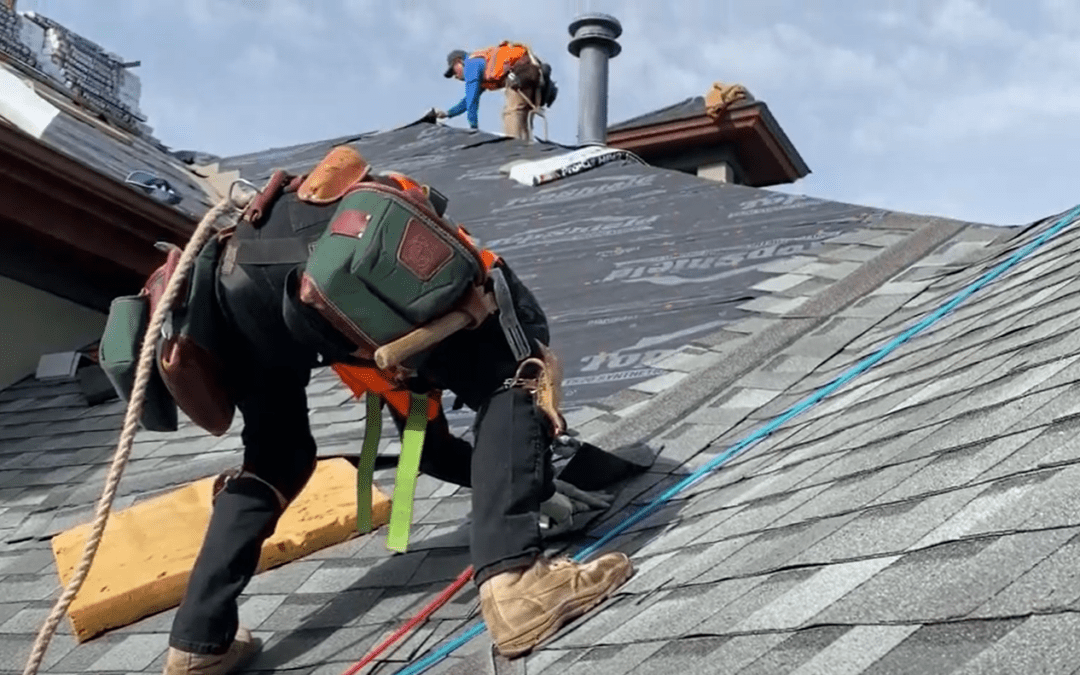Work with a certified Roofing Contractor for quality roofing services.
Just How to Review Various Roofing Alternatives for Your Structure Demands
Examining roof alternatives for your building requires a detailed technique that takes into consideration various elements such as the intended use of the structure, local environment problems, and material features. It is necessary to weigh the advantages and downsides of various roof types, from asphalt tiles to metal and clay tiles, while additionally factoring in initial costs and long-lasting maintenance. Furthermore, understanding energy efficiency and visual charm can affect your choice. As you contemplate these factors to consider, one concern stays: which variables will inevitably guide your selection for a lasting and aesthetically pleasing roofing remedy?
Assessing Your Structure's Demands
To successfully examine roofing options, begin by extensively evaluating your structure's demands. Begin by considering the building's meant usage, as different frameworks may necessitate differing roof specifications. Residential roofing systems frequently focus on aesthetics and insulation, while industrial buildings may focus on resilience and load-bearing capacity.
Next, evaluate the neighborhood climate conditions that will certainly impact roof covering performance. Elements such as temperature fluctuations, rainfall degrees, and wind patterns can influence material choice and layout. A roofing system that masters a warm environment might not do too in locations susceptible to heavy snowfall or severe warmth.
Additionally, assess the structural stability of your building. Ensure that the existing structure can support the selected roof covering materials, specifically if considering much heavier options. It is also important to review any kind of neighborhood structure codes or regulations that may dictate details requirements for roof.

Comparing Roofing Products
Once a thorough assessment of your structure's demands has been completed, the next action involves comparing various roof materials. Each product uses unique advantages and disadvantages, making it important to straighten your selection with your certain demands and situations.
Asphalt tiles are widely recognized for their price and convenience of setup, making them a popular option for residential structures. On the various other hand, metal roof covering, recognized for its resilience and longevity, can hold up against extreme weather however may feature a greater initial investment.
Clay and concrete floor tiles provide exceptional thermal insulation and visual appeal, specifically for Mediterranean-style design, yet they require a more robust structural support as a result of their weight. Timber shakes offer an all-natural appearance and excellent insulation residential or commercial properties yet might demand more upkeep and are susceptible to fire risks.
Reviewing Expense and Spending Plan
Evaluating your roof alternatives necessitates a mindful evaluation of expense and spending plan factors to consider. The general budget for a roof covering job makes up numerous variables, including material prices, labor costs, upkeep, and prospective long-lasting savings. It is important to develop a clear spending plan prior to discovering specific roof covering materials, as this will lead the decision-making procedure and aid you stay clear of overspending.
Begin by acquiring quotes from several contractors to comprehend labor expenses in your area. Make sure that these estimates include all necessary services, such as elimination of the old roofing, installation, and any type of added features, like insulation or air flow enhancements - Perrysburg Roofer. Next, analyze the cost of various roofing materials, taking into consideration both first installment prices and anticipated lifespan

Comprehending Power Efficiency
Energy effectiveness plays a crucial duty in the choice of roof products and systems, dramatically influencing both energy consumption and general convenience within a building. A well-chosen roof covering can boost thermal performance, reducing the need for heating and cooling down systems, which in turn reduces energy costs and decreases ecological influence.
When assessing roofing choices, take into consideration products that show rather than absorb heat. In addition, appropriate insulation and ventilation are essential to optimize the energy performance of the entire see here roof covering system.
An additional crucial element is the roof's long life and maintenance needs. Resilient materials that call for much less regular substitute add to long-term power financial savings. Moreover, the energy effectiveness of a roof system can likewise be assessed with its compliance with well-known sustainability rankings such as power CELEBRITY or LEED.
Thinking About Visual Charm
A roof's aesthetic allure dramatically influences the general look of a building, enhancing its building design and enhancing aesthetic charm. Perrysburg Roofer. When assessing roof choices, it is important to take into consideration how the selected product, color, and style will certainly harmonize with the existing structure and area. A well-designed roof can elevate even the most basic of buildings, transforming them into aesthetic prime focus
Different roof materials use various aesthetic high qualities. Standard tiles might stimulate a classic charm, while metal roof covering can give a modern, smooth appearance. Additionally, the color of the roof covering product plays an important function; lighter tones can make a building show up even more sizable, while darker tones might produce a cozier setting.
Moreover, building aspects, such as dormers and eaves, can boost the roofing's aesthetic impact. It is recommended to talk to specialist developers or engineers to guarantee the picked roofing alternative aligns with the total style intent. Inevitably, a roofing ought to not only offer useful benefits however also contribute favorably to the building's visual, reflecting the proprietor's taste and the character of the surrounding atmosphere.
Conclusion
